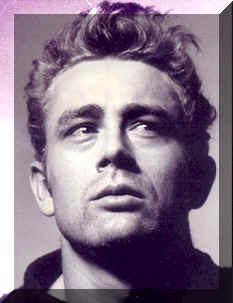Home »
FeaturesFEATURE
India: Safety, Not Sermons
Migrant Tamil labourers in Kerala had not been prime target for HIV awareness messages. However, a 1999 survey by Kochi-based NGO Centre for Advanced Projects and Solutions (CAPS) found that over 50 per cent of the labourers monitored suffered from sexually transmitted infections (STIs).
Labour migration from the poor farming towns of Tamil Nadu - such as Theni, Kambam and Dindigal - began about 15 years ago, with the collapse of the farming-based economy there. These migrants were either small-scale farmers or farm labourers. However, with the rains failing for several seasons together, many of them started looking out for new jobs. And the situation in neighbouring Kerala, especially its metros, was ideal for them.
The metros, led by Kochi, were undergoing a facelift, thanks to the huge demand for housing and office spaces. The new age companies in sectors like information technology and financial services brought in hundreds of employees, who moved to the cities with their families. The skilled construction labourers of Kerala had migrated to the Middle East long ago, and many of those who did not migrate were educated and did not want to do non-office jobs. This is when the Tamil labourers came in.
"More than half the construction workers from Tamil Nadu live in Kochi. This place is to us what the Middle East is to the Malayali," says M Manikantan, who migrated to Kerala from Kodai Road about five years ago.
"Back home, all of us were rain-dependent for our livelihood. Here we have work through the year, except during the peak of monsoon, and the pay is really good," he says, beaming. These migrant labourers now also work on agricultural land, ploughing and tilling, work as gardeners, run barber shops and undertake laundry jobs.
There are over one lakh Tamil labourers in Kerala, and nearly 50,000 of them are in Kochi, according to CAPS figures. They get about Rs 250 a day in Kerala - much more than their earnings in their hometown - and they get work six days a week. Many of them live away from families, visiting them once in a while. With more money in hand, and the loneliness of being away from their families, many labourers turn to promiscuity. Moreover, for women labourers, it is often necessary to please the mason to ensure steady flow of work. Multi-partner sex and unsafe sex are both vulnerability factors for HIV/AIDS and other STIs. The diseases then spread to the non-migrant population as well.
When CAPS activists first approached the labourers in 2000 they found them very resistant to intervention. The activists, therefore, decided to focus on one area for maximum effectiveness. They zeroed in on Vathuruthy, where over 20,000 Tamil labourers live in rented accomodation.
"In 2000 we began conducting medical camps in the area, talking about general health problems and hygiene. Slowly, we came to reproductive health," recalls Babu Joseph, Director, CAPS. Initially, people were suspicious of the activists and rejected the idea of condom use. The CAPS workers, though, kept up their efforts.
They went to pick-up spots (place from where labourers are picked up for work) early in the morning and spoke to the labourers about general health. Over time, they were able to build a rapport with some labourers, who confided in them. These people were then encouraged to visit the CAPS office and listen to health classes at their convenience (usually Sundays or late evenings). Word soon spread and the classes grew in strength.
Posters and huge hoardings were put up in pick-up spots, and these drew many to the programme. Street plays and poster exhibitions were conducted on the theme. The labourers were also given an opportunity to talk about their problems on the phone if they wanted to maintain anonymity. CAPS owes its success to the various linkages it created with workers' unions, government and private hospitals, social clubs and religious organisation.
"I was spotted by CAPS workers who felt that I could be an effective tool to communicate HIV/AIDS to my fellow workers," recalls Manikantan. Thus, Manikantan is now a field organiser who speaks to others of his community about safe sex and the perils of STIs. He takes them to the Voluntary Testing and Counselling Centre (VCTC) and also spots peer educators, who in turn speak to labourers vulnerable to STIs.
CAPS's work with Tamil migrant labourers is particularly significant in light of the fact that the labourers did not consult doctors when they fell sick. They were suspicious of Malayali doctors and hospitals. The hospitals were also unreceptive. Also, the labourers did not know the symptoms of STIs. But all of these things changed slowly. The activists identified clinics and, with the help of sympathetic doctors, created a friendly atmosphere for labourers. Within a year of starting the intervention, many labourers began going there for regular check-ups.
Activists also had some trouble while canvassing for the use of condoms,which sometimes hurts religious sentiments in communities that disapprove of birth control. Also, goondas and organised criminals began to fear that their fiefdom was under threat. The CAPS workers, though, managed to convince them that they are working only to minimise health problems.
Five years down the line, in high vulnerability areas like Vathuruthy, people store condoms at home, and several houses function as condom outlets. Outside Vathuruthy, small shops near work sites or pick up spots, which the labourers frequent, are used as condom outlets. People keep track of condom usage and report to the CAPS office regularly.
Remitha (name changed), a labourer-turned-sex worker, confides, "It's not that we have stopped sex work. But now we insist that our clients use condoms. As a result of this, we have fewer health problems."
While CAPS provided condoms free of cost for the first couple of years, people are ready to buy them now. Medical records show that repeated treatments for STIs have drastically reduced. Migrants say that because of awareness programmes, they are able to relate symptoms to diseases, and consult the doctor immediately. Unwanted pregnancies and abortion, especially in Vathuruthy, have plummeted.
Joseph says it is difficult to bring migrant labourers to single-partner behaviour. In many parts of Tamil Nadu, the number of women he keeps is a marker of a man's financial and physical capabilities. "When there is no social taboo against these activities, it is difficult to make them unlearn what they accumulated over generations. The best option is to teach them safety methods so that the diseases do not spread to others," he says.
Courtesy: Women's Feature Service
Previous Features













































